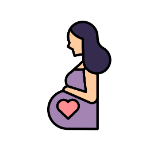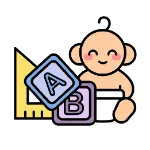
Pregnancy Care
The Silent Threat: How Preeclampsia Can Harm Both Mother And Baby
8 min | Updated on 22-03-2023 by HappyPreggie
(Image credits to Atrium Health)
Preeclampsia is a pregnancy complication where you may have high blood pressure, high levels of protein in the urine that indicate kidney damage, or other signs of organ damage. According to the World Health Organization (WHO), preeclampsia affects 2% to 8% of pregnancies worldwide. Preeclampsia can occur in any pregnant woman, but it is more common in first-time pregnancies and those who have had it in their previous pregnancy. For women whose blood pressure was in the standard range, preeclampsia may begin after 20 weeks of pregnancy. If left untreated, preeclampsia can lead to serious, or even life-threatening, complications for both the mother and baby.
If you have preeclampsia, your doctor may recommend early delivery of the baby. The timing of delivery will depend on how severe the preeclampsia is and how far along you are. Before giving birth, you may receive treatment, including careful monitoring and medications to lower blood pressure and manage complications.
You may also develop preeclampsia after giving birth, a condition known as postpartum preeclampsia.
(Image credits to Pregistry)
What Causes Preeclampsia?
No one is entirely sure what the causes of preeclampsia are. However, it is believed to be derived from a problem with the placenta's health (the organ that develops in the uterus during pregnancy and provides oxygen and nutrients to the foetus). If you have preeclampsia, the blood supply to the placenta may decrease, which leads to problems with both you and the foetus.
What Happens When You Have Preeclampsia
When you have preeclampsia, your blood pressure will increase (higher than 140/90 mmHg), and you may have high levels of protein in your urine. Preeclampsia can also put stress on your heart and other organs, causing severe complications. This can also affect the blood supply to your placenta, impair liver and kidney functions or cause fluid to build up in your lungs. In addition, the high level of protein in your urine indicates a sign of kidney dysfunction.
Who Is At Risk Of Getting Preeclampsia?
(Image credits to SOG Health Pte. Ltd.)
Preeclampsia may be more common in first-time mothers, but healthcare providers aren’t entirely sure why some women develop preeclampsia. Some factors that can put you at a higher risk are:
- Chronic high blood pressure (hypertension)
- Type 1 or type 2 diabetes before pregnancy
- Kidney disease
- Expecting multiples (twins, triplets, etc.)
- Autoimmune conditions like lupus
- Use of IVF (in vitro fertilisation)
Meanwhile, below are some conditions that are associated with a moderate risk of developing preeclampsia, such as:
- First pregnancy with current partner
- Obesity
- Family history of preeclampsia
- Maternal age of 35 or older
- Complications in a previous pregnancy
- More than 10 years gap since the last pregnancy
Symptoms Of Preeclampsia
The most defining feature of preeclampsia is high blood pressure, proteinuria, and other signs of kidney or other organ damage. However, you might have no noticeable symptoms. The first signs of preeclampsia are often detected during routine prenatal visits with your doctor. Other than high blood pressure, preeclampsia symptoms may include:
- Excess protein in the urine (proteinuria) or other signs of kidney problems
- Decreased levels of platelets in the blood (thrombocytopenia)
- Increased liver enzymes that indicate liver problems
- Severe headaches
- Changes in vision, including temporary loss of vision, blurred vision or light sensitivity
- Shortness of breath caused by fluid in the lungs
- Pain in the upper belly, usually under the ribs on the right side
- Nausea or vomiting
You may worry about weight gain and swelling (oedema), but those are normal in healthy pregnancies. However, sudden weight gain or the sudden appearance of oedema - specifically in your face and hands - may indicate preeclampsia.
Complications Of Preeclampsia
(Image credits to Healthwire)
Complications of preeclampsia may include:
#1 Foetal growth restriction
Preeclampsia affects the arteries that carry blood to the placenta. If the placenta doesn’t get enough blood, your baby may receive insufficient blood, oxygen and nutrients. This can lead to slow growth.#2 Premature birth
Preeclampsia can lead to an unplanned premature birth, which is delivery before 37 weeks. Babies born prematurely have an increased risk of breathing and feeding difficulties, vision or hearing problems, developmental delays and cerebral palsy. However, planned premature birth is actually a primary treatment for women with preeclampsia. Treatments given before the premature delivery may be able to decrease some risks.#3 Placental abruption
Preeclampsia increases your risk of placental abruption, where the placenta separates from the inner wall of your uterus before delivery. Severe abruption can cause heavy bleeding, which can be life-threatening for both you and your baby.#4 HELLP syndrome
HELLP stands for hemolysis (the destruction of red blood cells), elevated liver enzymes and low platelet count. This is a severe form of preeclampsia that affects several organ systems. It can be life-threatening for the mother and baby and may also cause lifelong health problems for the mother.Signs of HELLP include nausea and vomiting, headache, upper right belly pain, and a general feeling of illness or being unwell. HELLP can sometimes develop suddenly before high blood pressure is detected and may develop without any symptoms.
#5 Eclampsia
Eclampsia is the onset of a seizure or coma with symptoms of preeclampsia. It’s difficult to predict whether a patient with preeclampsia will develop eclampsia, as it can happen without any previously observed signs.Signs that may appear before seizures include severe headaches, vision problems, mental confusion or altered behaviours. However, there are often no symptoms or warning signs. Eclampsia can occur before, during or after delivery.
#6 Other organ damage
Preeclampsia can result in damage to the kidneys, liver, lungs, heart or eyes and may cause a stroke or other brain injury. The seriousness of harm to other organs depends on the severity of the preeclampsia.#7 Cardiovascular disease
Having preeclampsia increases your risk of future heart and blood vessel (cardiovascular) disease. The risk is greater if you've had preeclampsia more than once or had a premature delivery before.How To Treat Preeclampsia
(Image credits to Verywell Family)
If you're diagnosed with preeclampsia, you will be referred for an assessment by a specialist, usually in a hospital. While in the hospital, you'll be monitored closely to determine the severity of your condition and whether a hospital stay is needed.
The only way to cure preeclampsia is by delivering the baby, so usually, you'll be monitored regularly until you can give birth. This will generally be around 37 to 38 weeks of pregnancy, but it can be earlier if your case is severe.
At this point, labour may be started artificially (induced), or you may have a Caesarean section (C-section). Your doctor will offer medicine to lower your blood pressure while you wait for your baby to be delivered.
How To Prevent Preeclampsia
For women with risk factors of developing preeclampsia, there are some steps that you can take before and during pregnancy to lower the possibility. These steps include:
- Losing weight if you are overweight or obese (prior to pregnancy-related weight gain)
- Controlling your blood pressure and blood sugar (if you have high blood pressure or diabetes prior to pregnancy)
- Maintaining a regular exercise routine
- Getting enough sleep
- Eating healthy foods that are low in salt and avoiding caffeine
Reference:
Join the largest support network for family health and well-being. Ready to get started?
Get started
















